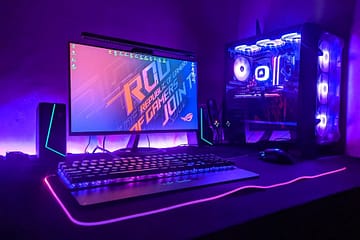Smart plug energy monitors are devices that can be plugged into any standard electrical outlet to monitor the energy usage of the connected devices. These monitors typically connect to a smartphone app or a web portal, allowing users to track their energy consumption in real-time. Smart plug energy monitors can provide valuable insights into which devices are consuming the most energy, and can help users identify opportunities to reduce their energy usage and save money on their utility bills.
One of the key features of smart plug energy monitors is their ability to provide detailed information about energy usage, including real-time and historical data. This can help users understand how their energy usage patterns change throughout the day, week, or month, and can help them identify trends and patterns that may be contributing to high energy bills. Additionally, some smart plug energy monitors can provide estimates of the cost of running connected devices, allowing users to see the financial impact of their energy usage in real-time.
Choosing the Right Smart Plug Energy Monitor for Your Home
When choosing a smart plug energy monitor for your home, there are several factors to consider. First, you’ll want to consider the compatibility of the monitor with your existing smart home ecosystem. Some smart plug energy monitors are designed to work with specific smart home platforms, such as Amazon Alexa, Google Assistant, or Apple HomeKit, while others may be more platform-agnostic. Additionally, you’ll want to consider the number of outlets on the monitor, as well as any additional features such as power metering, energy reporting, and remote control capabilities.
Another important factor to consider when choosing a smart plug energy monitor is the level of detail and accuracy provided by the device. Some monitors may only provide basic information about energy usage, while others may offer more advanced features such as real-time monitoring, historical data tracking, and cost estimates. Additionally, you’ll want to consider the ease of installation and setup, as well as the user interface and app experience. Finally, you’ll want to consider the price of the monitor, as well as any ongoing subscription fees or additional costs associated with using the device.
Setting Up Your Smart Plug Energy Monitor
Setting up a smart plug energy monitor is typically a straightforward process that involves plugging the device into a standard electrical outlet and connecting it to a smartphone app or web portal. Most smart plug energy monitors will require users to create an account and connect the monitor to their home Wi-Fi network in order to access real-time energy usage data and other features. Once the monitor is connected, users can typically begin monitoring their energy usage immediately, and can start to gain insights into their energy consumption patterns.
In addition to setting up the monitor itself, users may also have the option to customize their energy monitoring experience by setting up alerts and notifications for specific devices or energy usage thresholds. This can help users stay informed about their energy usage and can help them identify opportunities to reduce their consumption and save money on their utility bills. Additionally, some smart plug energy monitors may offer additional features such as remote control capabilities, scheduling options, and integration with other smart home devices.
Monitoring and Analyzing Your Energy Usage
Once your smart plug energy monitor is set up, you can begin monitoring and analyzing your energy usage in real-time. Many smart plug energy monitors provide detailed information about the energy consumption of connected devices, including real-time power usage, historical data tracking, and cost estimates. This can help users understand which devices are consuming the most energy, and can help them identify opportunities to reduce their consumption and save money on their utility bills.
In addition to providing detailed information about energy usage, some smart plug energy monitors may also offer advanced analytics and reporting features that can help users gain deeper insights into their energy consumption patterns. This may include features such as trend analysis, comparative usage reports, and recommendations for reducing energy usage. Additionally, some monitors may offer integration with third-party energy management platforms or services, allowing users to access even more advanced analytics and reporting capabilities.
Implementing Energy Saving Strategies
Armed with detailed information about their energy usage, users can begin implementing energy saving strategies to reduce their consumption and save money on their utility bills. One of the most effective strategies for reducing energy usage is to identify and address “energy vampires,” or devices that consume power even when they are not in use. By using a smart plug energy monitor to identify these devices, users can take steps to reduce their standby power consumption and save money on their utility bills.
Another effective strategy for reducing energy usage is to implement scheduling and automation for connected devices. Many smart plug energy monitors offer scheduling capabilities that allow users to set specific times for devices to turn on and off, helping to reduce unnecessary energy consumption. Additionally, some monitors may offer integration with other smart home devices or platforms, allowing users to create more advanced automation routines that can help reduce their overall energy usage.
Integrating Smart Plug Energy Monitors with Smart Home Systems
Smart plug energy monitors can be a valuable addition to any smart home ecosystem, providing users with detailed insights into their energy usage and helping them identify opportunities to reduce their consumption and save money on their utility bills. Many smart plug energy monitors offer integration with popular smart home platforms such as Amazon Alexa, Google Assistant, or Apple HomeKit, allowing users to access their energy usage data and control connected devices using voice commands or other smart home automation routines.
In addition to integration with smart home platforms, some smart plug energy monitors may also offer integration with third-party energy management platforms or services. This can provide users with access to even more advanced analytics and reporting capabilities, as well as additional tools for reducing their energy consumption. Additionally, some monitors may offer integration with other smart home devices such as smart thermostats, lighting controls, or home security systems, allowing users to create more comprehensive automation routines that can help reduce their overall energy usage.
Troubleshooting and Maintenance Tips for Smart Plug Energy Monitors
Like any electronic device, smart plug energy monitors may require occasional troubleshooting and maintenance to ensure optimal performance. If you experience issues with your monitor, such as connectivity problems or inaccurate readings, you may want to try resetting the device or updating its firmware to see if that resolves the issue. Additionally, you may want to check for any software updates for the monitor’s smartphone app or web portal, as these updates may include bug fixes or performance improvements.
In addition to troubleshooting issues with your smart plug energy monitor, it’s also important to perform regular maintenance on the device to ensure it continues to operate properly. This may include cleaning the monitor’s electrical contacts and ensuring that it is plugged into a stable electrical outlet. Additionally, you may want to periodically check the accuracy of the monitor’s readings by comparing them to your utility bills or other sources of energy usage data. By performing regular maintenance on your smart plug energy monitor, you can help ensure that it continues to provide accurate and reliable information about your energy usage.


